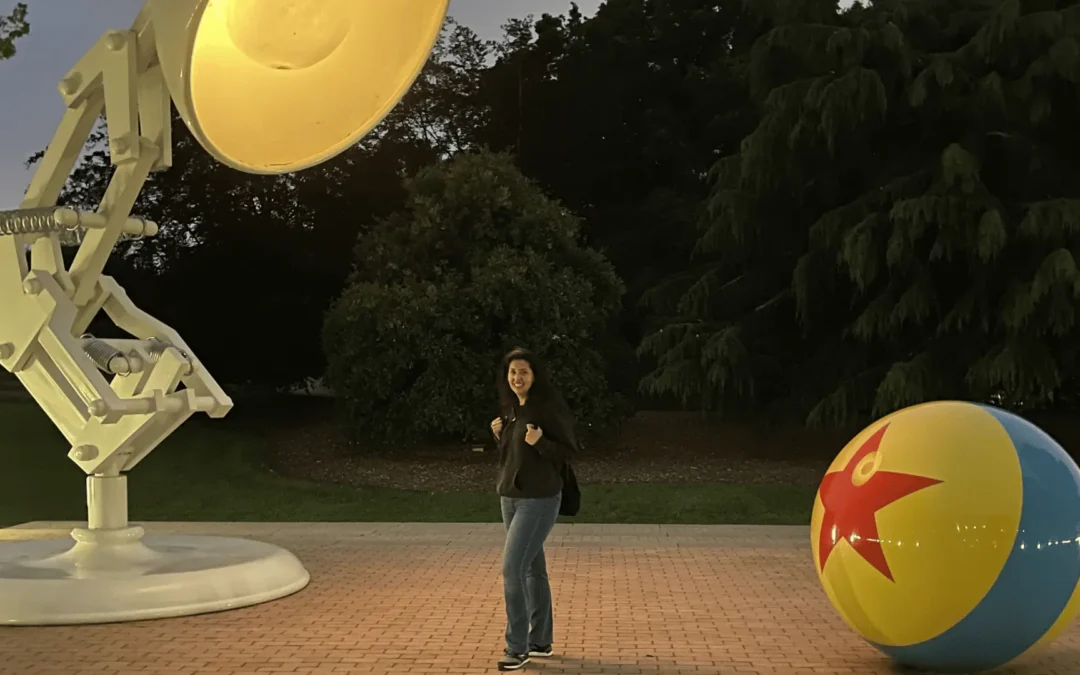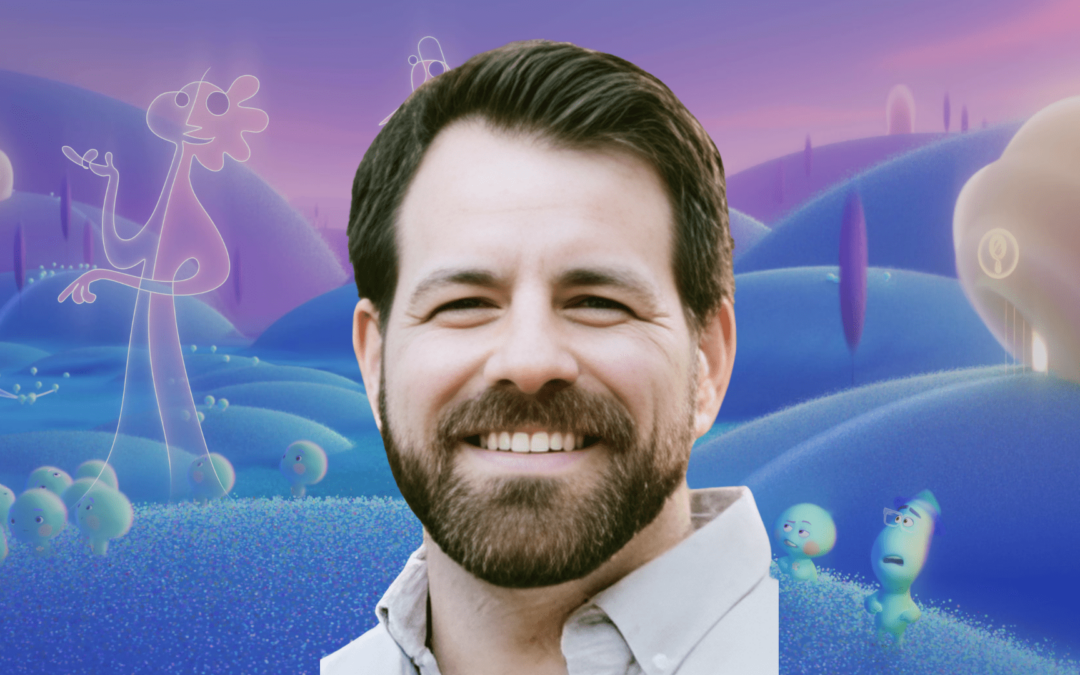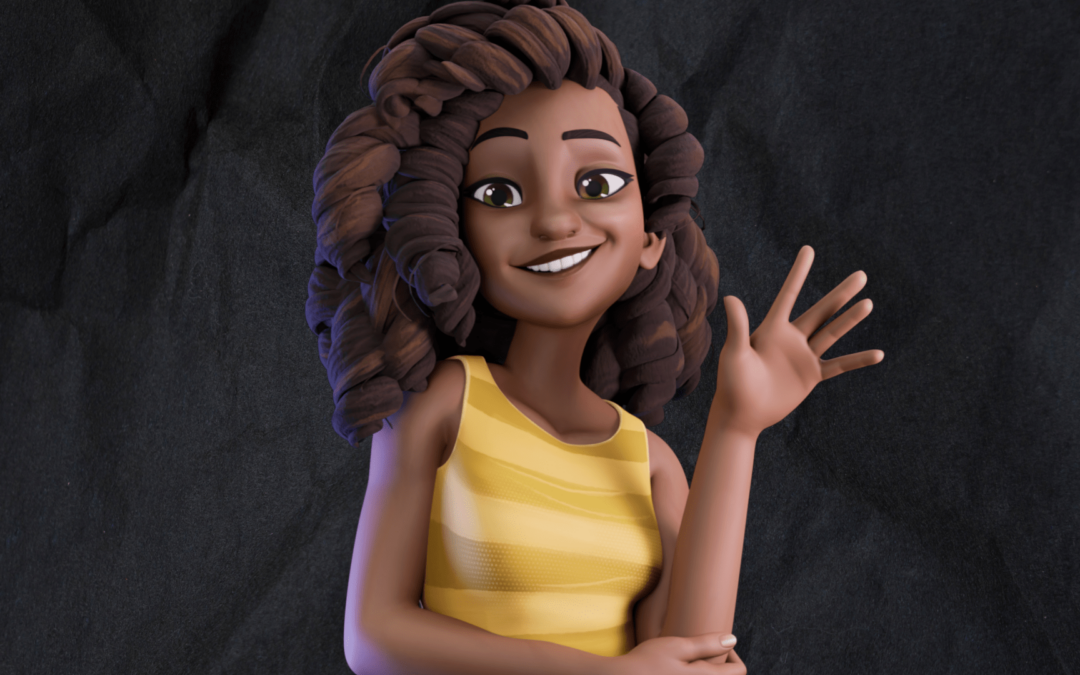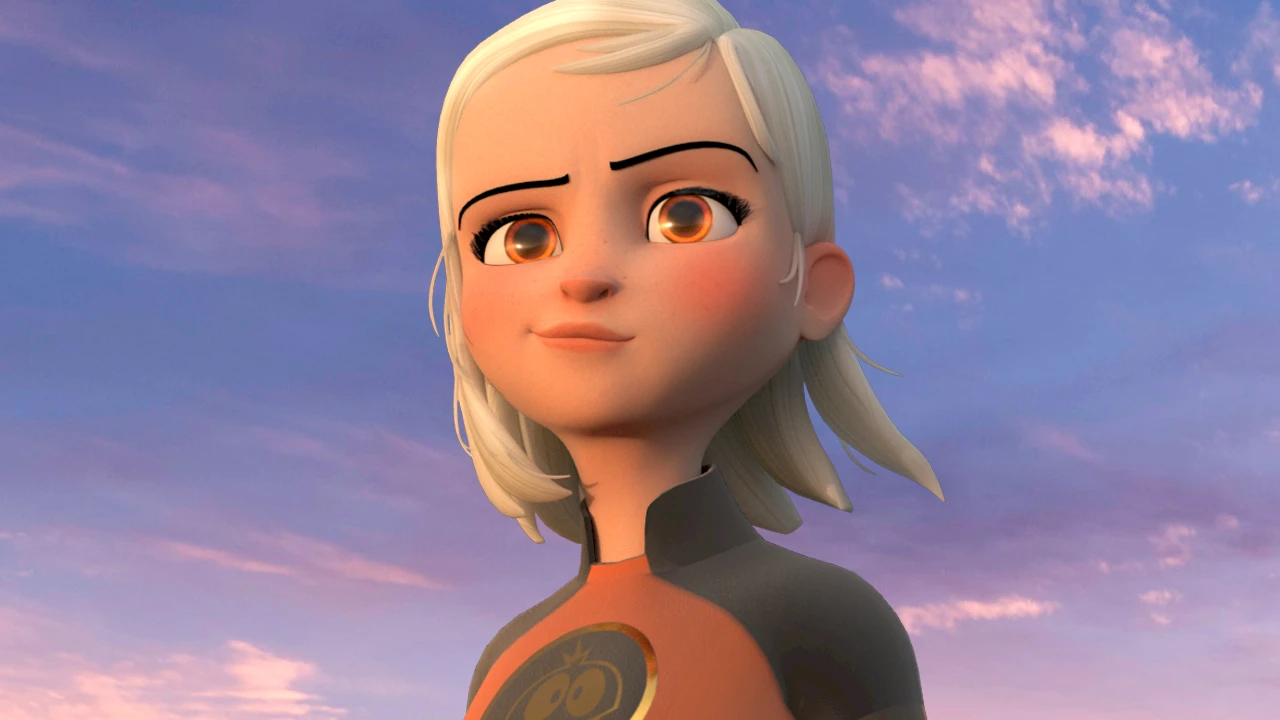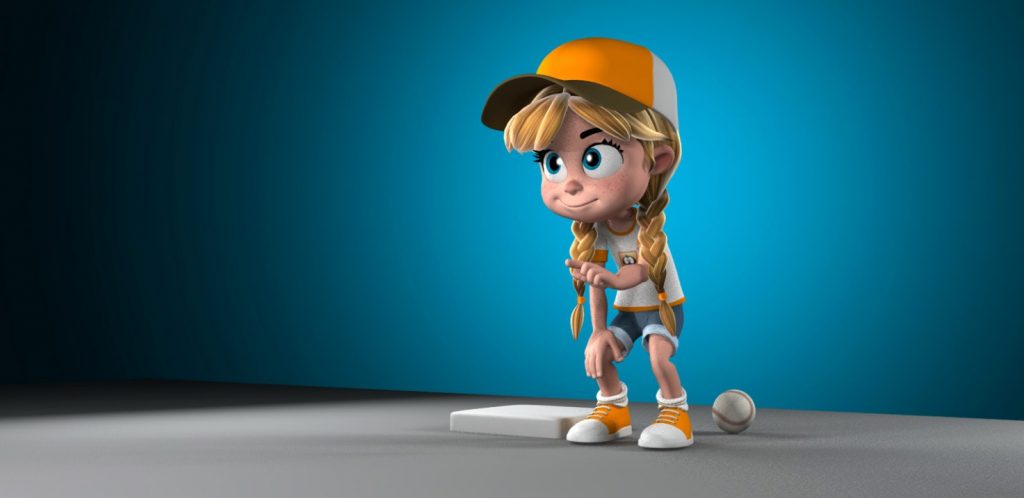
Quinn plays ball, mod by Richard Vant Hul
Animation Mentor: Where did the idea for Quinn come from?
Bobby Beck, CEO: It’s really exciting actually. We polled the entire AM community to see what type of character they’d like to see next and they chose a kid. After that we worked with the community to solidify the design and then we kept them in the loop throughout the entire process. This is the first time we’d ever done that before and it worked out quite well. We were able to also turn around the character and get it out to students in record time. A lot of that was being clear on the vision and having an outstanding and dedicated team behind it.
AM: Can you tell us a little about the creative group behind Quinn? Who did what?
BB: One of the best parts of working on a project like this is that we get to reach out and work with some of the most inspiring artists. Getting to work with them is truly an honor and we had an A+ team on Quinn.
Design
AM: When did the character design come alive for you? Was there a moment when you saw Quinn’s personality start to shine?
Guille Rancel: I remember that after some attempts we decided to work off a specific sketch. I am sure that was the moment I knew we landed on something. I think it was the expression that showed what the character could be like that hit. After that, we only had to define details, like proportions, sizes and other bits like finger shape, etc.
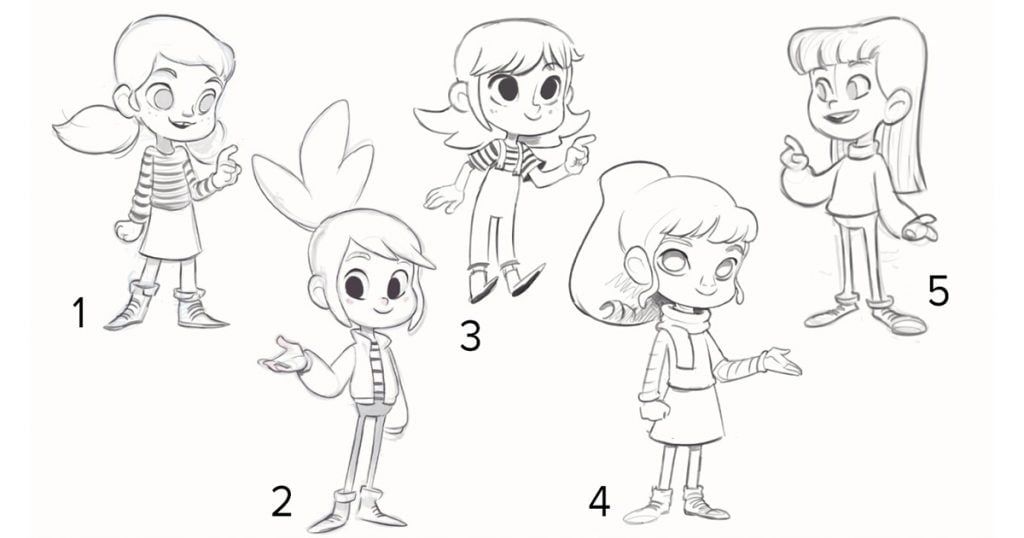
Exploring the design with Guille Rancel
AM: What was the inspiration for Quinn’s style? We really like the overall aesthetic. It feels like a mix of modern and nostalgic.
GR: I think Quinn fits in my own style. She looks like most of my character designs. I felt comfortable creating this character, so it’s not easy to find an only inspiration source. I love cartoon movies and comic books, so I would say it’s a mix of them and all the things that appeal to me. I’m happy that the team enjoyed the direction as well as that is what it’s all about in the end.
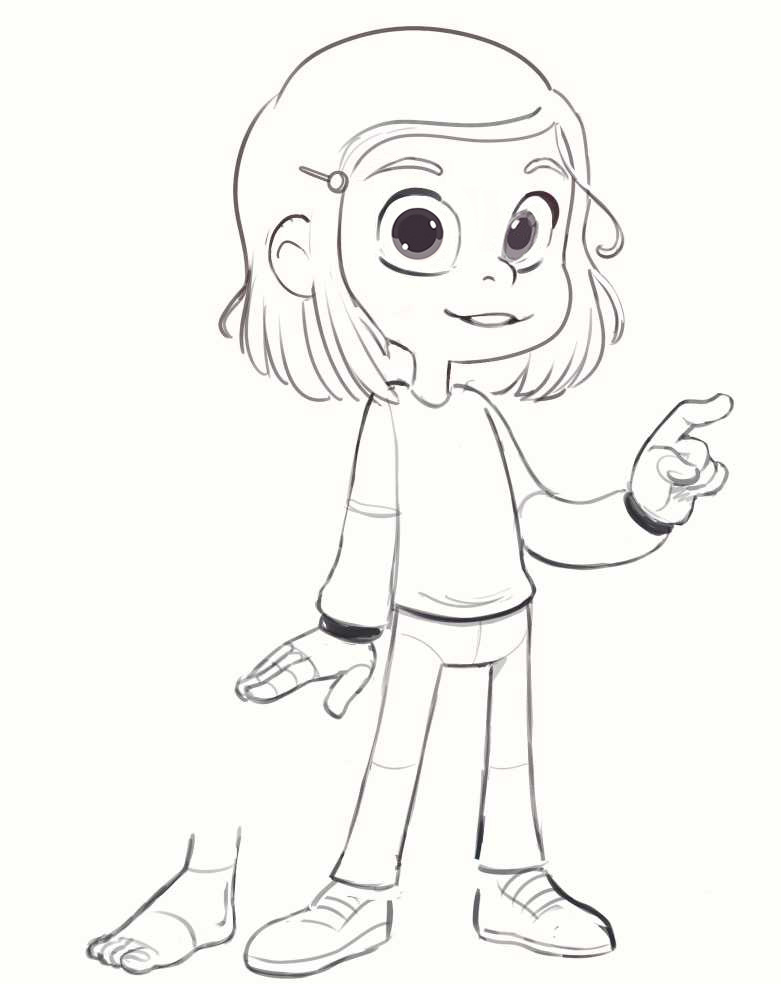
Quinn’s final design
Modelling
AM: How do you get started in modeling a character like this? What’s your general process like?
Matias Zadicoff: Many times it is hard to achieve the appeal of the 2d concept in 3d cause you can cheat in 2d but you cannot do it in 3d and my goal as a 3D modeler is to preserve the style of the concept art. In this case I received a few sketches from Guille that were really well constructed already, even though I had to make sure it looked consistent from every different angle cause sometimes it looks right at certain angle but you turn 10 degrees and it looks like a different character. So my process is a lot of back and forth making sure all the shapes have the same language volumes and complexity.
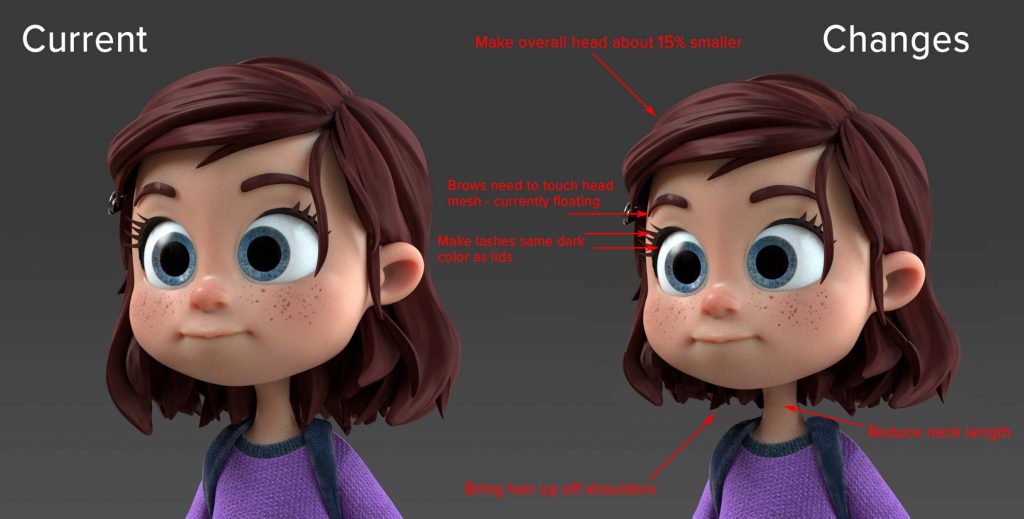
Model feedback for Quinn
AM: What aspect of the design did you feel was most critical to capture during the modelling process?
MZ: I think the eyes and cheeks are usually the harder parts in a stylized character to get right and feel appealing. The first thing you have to define is the size and position of the eyeballs considering that you only see a portion of them and the rest is hidden, so depending on the size of the spheres it will determine the curvature of the eye. I use zbrush to mask out the rest of the face so that I can freely move and scale the eyes around until I feel that I reach the look of the character. Cheeks are also tricky, because even for cartoony characters you need a solid foundation of realistic body and face anatomy.
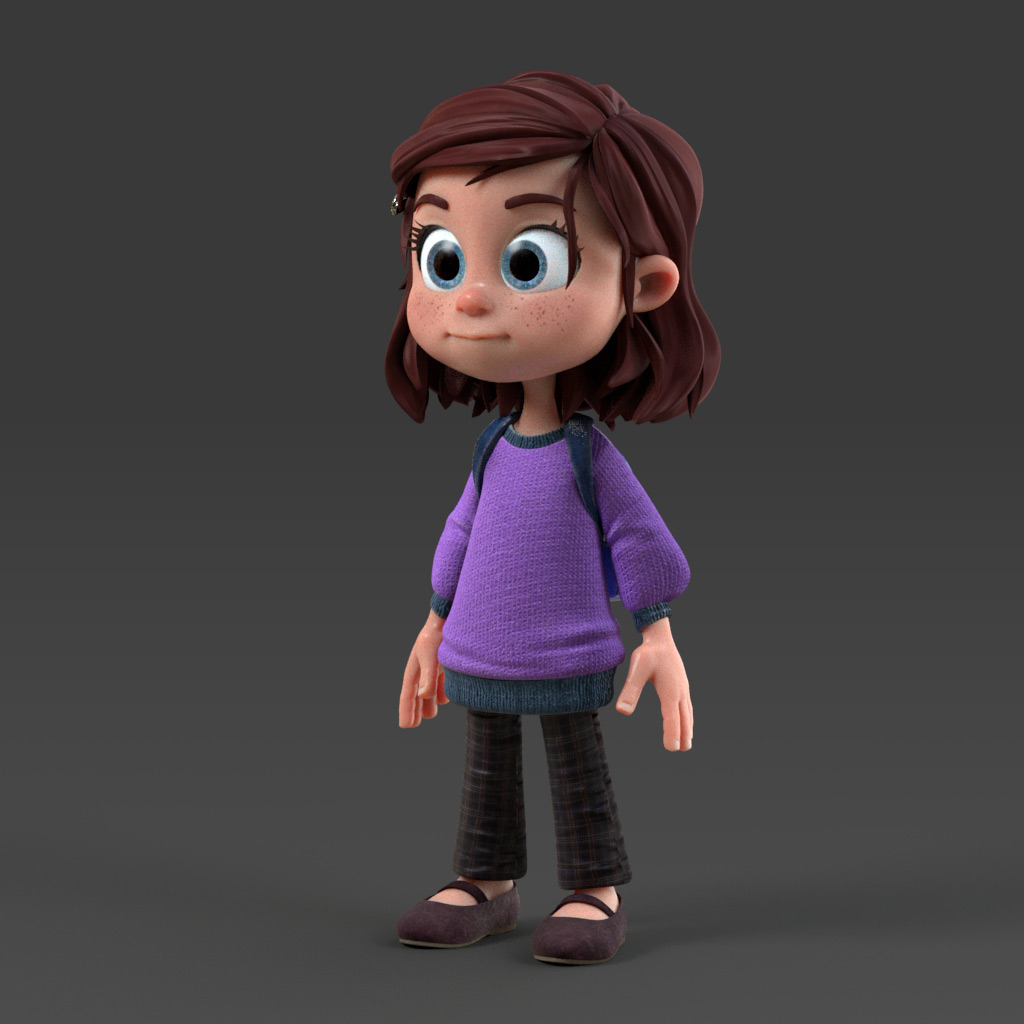
Final Quinn model by Matias Zadicoff
Rigging
AM: What was the most difficult part of rigging Quinn? What was the most fun?
Zach Baharov:
Since students will modify the character we needed to make sure that the body mesh was in tact so they could do things like put the character in a swimsuit. So having the multiple pieces of clothing such as a sweater, pants, and shoes, as well as hair and a backpack definitely added complexity, since each of those pieces of geometry needed to work in conjunction with the underlying body geometry with full range of motion.
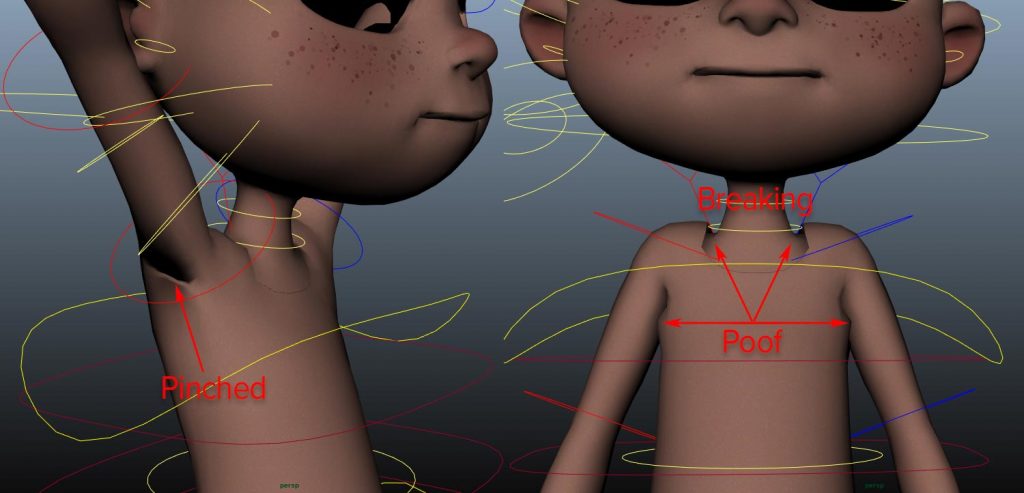
Gathering feedback on the rig is an important part of the process
While faces can typically be very challenging to articulate, Quinn’s face was a treat to rig. Seeing the still model slowly come to life with each blink and eye movement, emote with every mouth pose and lip curl, and show attitude with a raised brow, is a satisfying experience that makes the long process worthwhile.
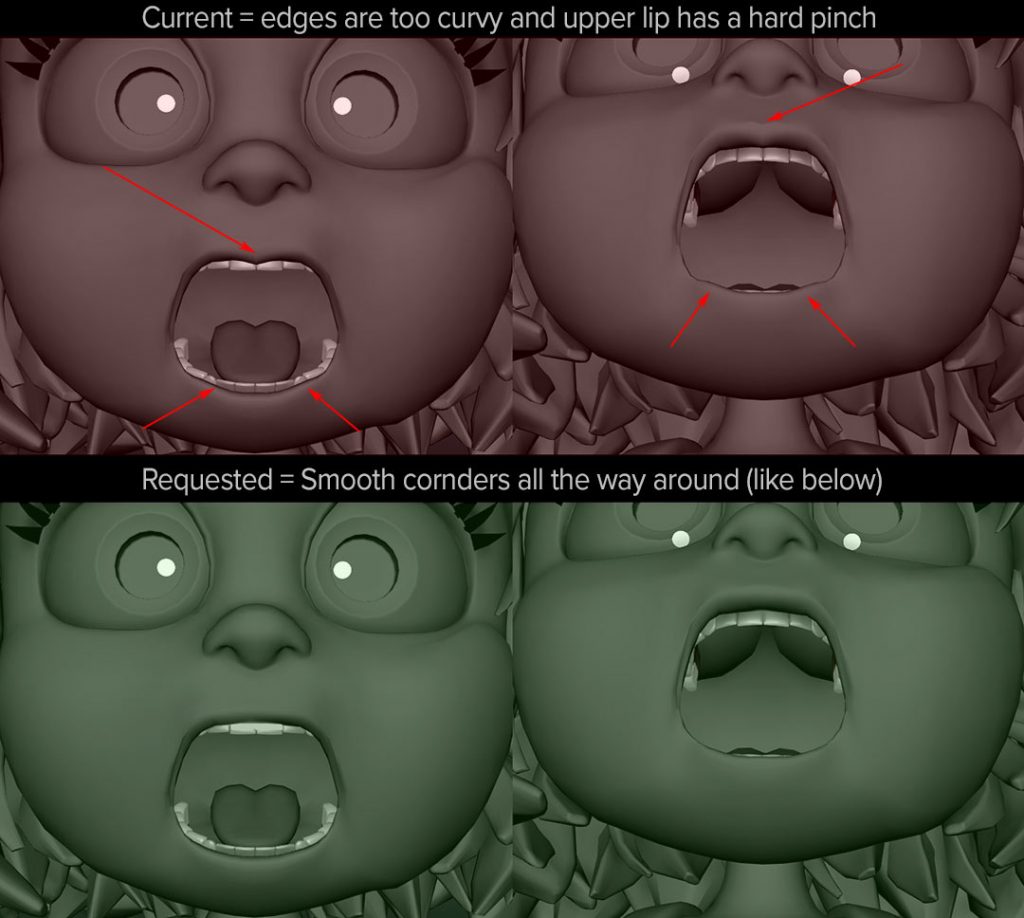
Getting those facial controls juuuust right!
AM: What’s something about the rigging process that would surprise people?
ZB: While most CG artists need to have a blend of artistic and tech know-how, I feel that rigging is the ultimate example of those skills mixing together. It may be surprising that the process requires a knowledge of a few different fields: animation, modeling, and computer programming.
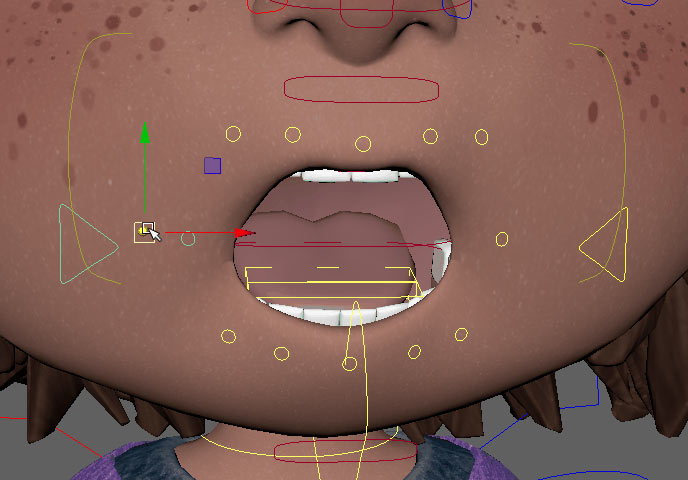
The rigging’s in the details!
To know how to setup a character so that it is intuitive for animators, you must have animated. To create the dozens of blendshapes required to keep the character on-model as animators move controls around requires a knowledge of sculpting. And to streamline the process of rebuilding the rig after each revision, requires coding experience. The process has its twists and turns, but the end result is very rewarding – a digital puppet that is ready to come to life!
Animation
AM: What did you love about animating with Quinn?
Erin Natal: For my part as an animator, I just loved tapping into that endless energy of a kid, where they’ll just start bouncing around and being silly. And Quinn’s design is so appealing, it makes you want to lean into that and come up with the cutest ideas you can, to get the most out of her. She made me want to do something carefree and fun, so that’s how I approached animating her. Quinn’s a really intuitive rig. The team did a great job making her easy to work with, and giving us a character that looks adorable from whichever angle.
Tony D’Aurio: One of the things I really enjoyed about animating Quinn right away came simply from her appearance. Guille, Zach, and Matias all did a fantastic job creating this character from concept to full rig. I think her youthful, energetic persona really encouraged me to animate and explore different personalities and movements that can only be captured in a young child, which this character represents. I actually found it refreshing, yet challenging at the same time. This was a fun and great opportunity to experiment with a whole other range of human emotions and mechanics.
AM: As an animator, what is the best part about playing with a new rig?
EN: The most exciting part for me is bringing life to the character for the first time. It’s their time to shine, it’s what everyone has been working towards! It’s awesome to be able to show the design, modeling and rigging team how their work has paid off, and just giving everyone a taste of the character’s potential. Being able to pick an idea that’ll show them off and test their limits is really fun. Coming in as the character is still a work-in-progress and being able to give input on the rig is also great, because I haven’t really had that opportunity before.
TD: What I love about playing with new rigs is discovering new and creative ways to bring that character to life. Working on a new rig can, at times, be a bit overwhelming, however, it also entices me to try and push different ideas to create a persona in the character.
With a new rig I’m not influenced by having seen the character before. No one knows her yet. I feel like I’m the first person to breathe life into this new character. I’ve had the opportunity to test rigs before, beta testing Arc the Dragon for Josh Sobel. So, I had an idea what the Quinn team expected from me and Erin. We were to work out the kinks and perfect the rigging for the use and enjoyment of future animators. It was a thoroughly enjoyable experience.
Start your animation journey today by learning from animators at studios like Blue Sky, Pixar, and Sony Imageworks! Get more information about Animation Mentor’s Character Animation Program.
